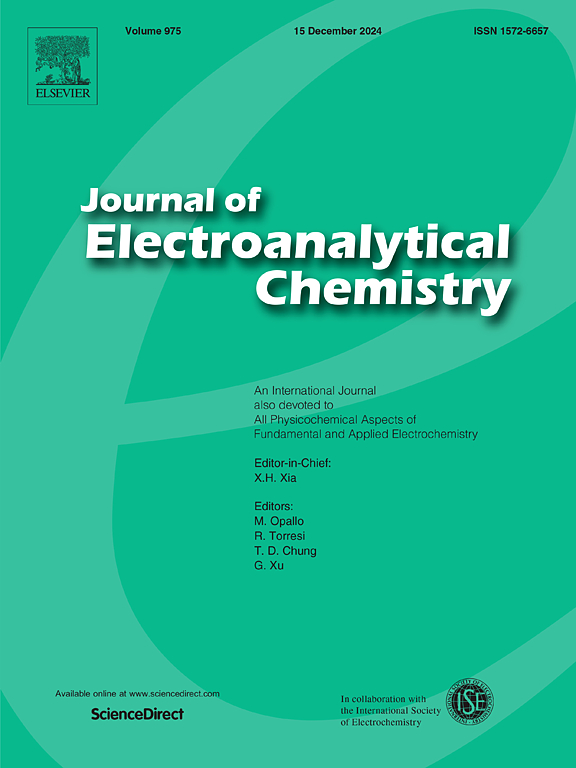OFF–ON stirring potentiometry with solvent polymeric membrane ion-selective electrodes: A theory-guided approach to foreign ions
IF 4.1
3区 化学
Q1 CHEMISTRY, ANALYTICAL
引用次数: 0
Abstract
The response of ion-selective electrodes (ISEs) towards a foreign ion is comprehensively investigated as a function of the nature and concentration of the ion, and of the mass transport conditions in the outer solution. Notably, a striking transient potential drift is evidenced by sheer activation of stirring in an initially quiescent solution of the foreign ion, both in the absence and presence of the primary ion. This phenomenon is rationalized in terms of the ion exchange at the outer membrane side coupled to the mass transfer of ions. This has been modelled through a novel theoretical treatment of the corresponding time-dependent mass transport problem, leading to simple closed-form expressions for the membrane potential and for the interfacial ion concentrations in the unstirring and stirring periods. The theoretical predictions are corroborated experimentally by monitoring the potential of a nitrate ISE exposed to ions of very different affinity towards the membrane (tetraphenylborate, perchlorate and chloride) before and after switching on the agitation of the solution. Such OFF-ON stirring program enables the study of foreign ions, even simultaneously with the determination of the primary species, by the joint analysis of the potentials before and after the activation of the stirring.
求助全文
约1分钟内获得全文
求助全文
来源期刊
CiteScore
7.80
自引率
6.70%
发文量
912
审稿时长
2.4 months
期刊介绍:
The Journal of Electroanalytical Chemistry is the foremost international journal devoted to the interdisciplinary subject of electrochemistry in all its aspects, theoretical as well as applied.
Electrochemistry is a wide ranging area that is in a state of continuous evolution. Rather than compiling a long list of topics covered by the Journal, the editors would like to draw particular attention to the key issues of novelty, topicality and quality. Papers should present new and interesting electrochemical science in a way that is accessible to the reader. The presentation and discussion should be at a level that is consistent with the international status of the Journal. Reports describing the application of well-established techniques to problems that are essentially technical will not be accepted. Similarly, papers that report observations but fail to provide adequate interpretation will be rejected by the Editors. Papers dealing with technical electrochemistry should be submitted to other specialist journals unless the authors can show that their work provides substantially new insights into electrochemical processes.

 求助内容:
求助内容: 应助结果提醒方式:
应助结果提醒方式:


